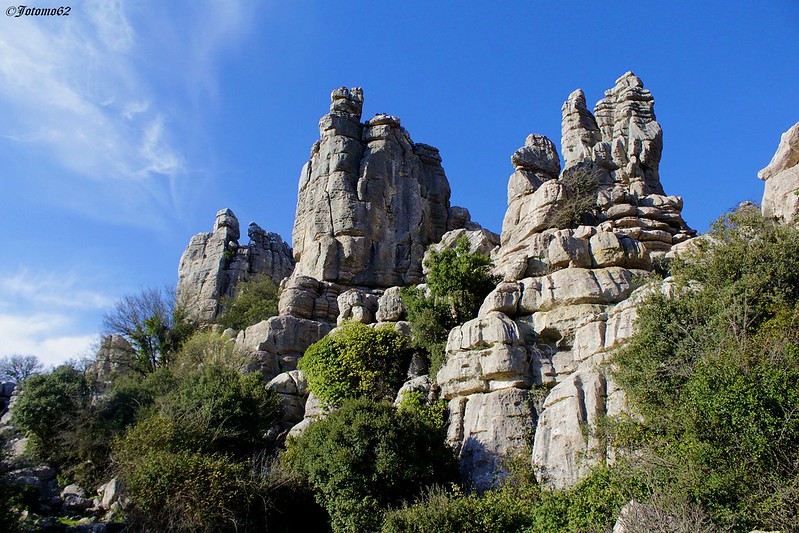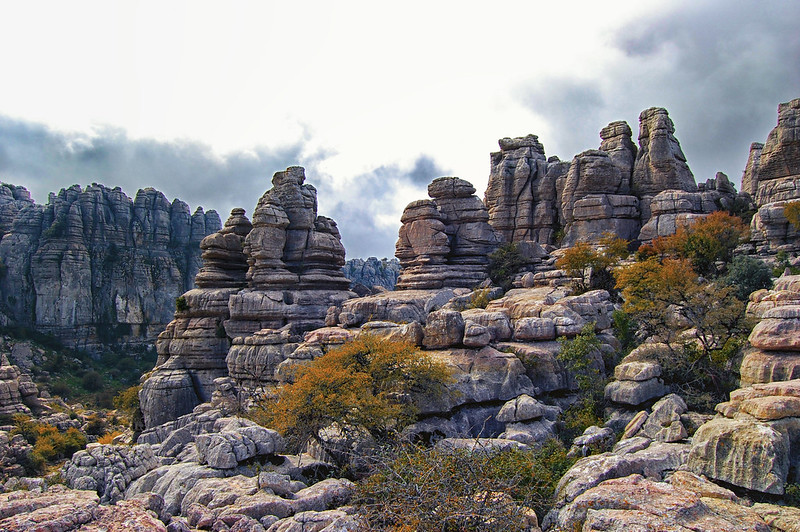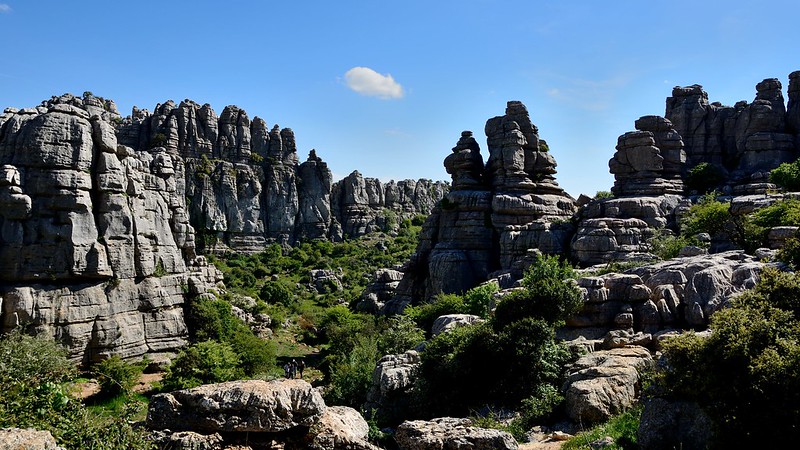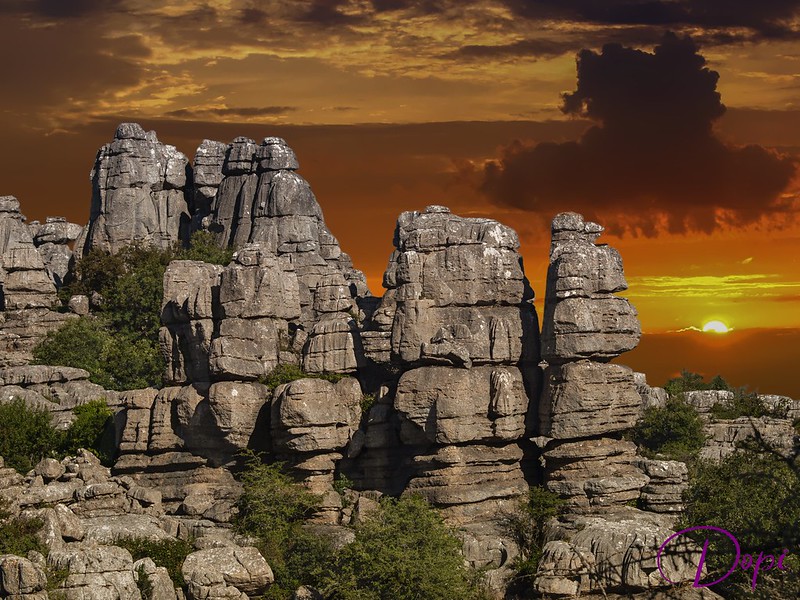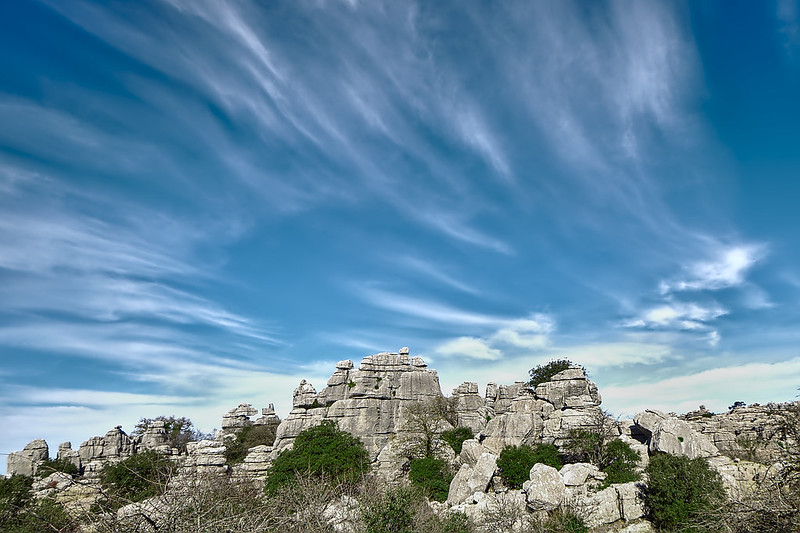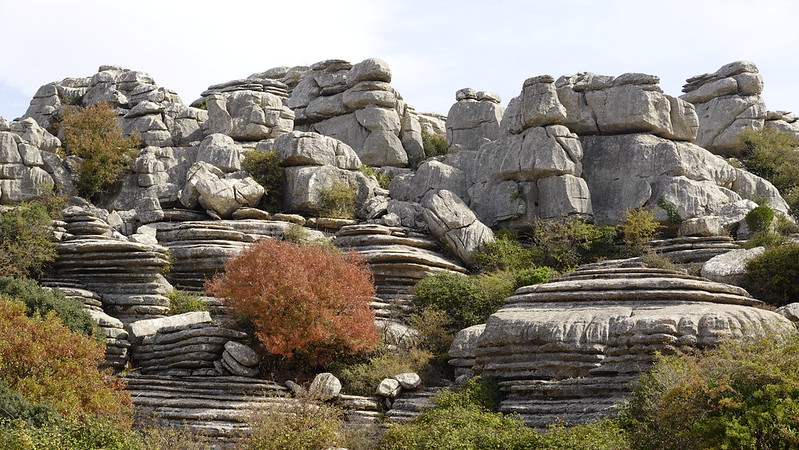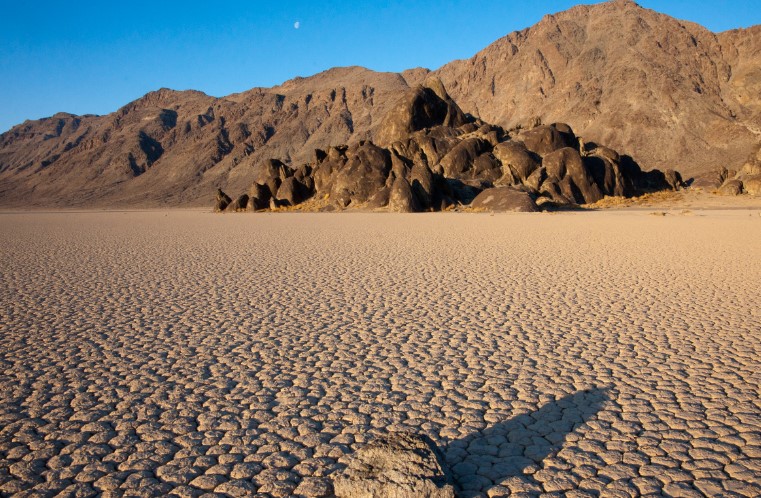El Torcal de Antequera is a nature reserve recognized for its unique formations and is considered one of Europe’s most spectacular karst landscapes. A small mountain range called the Sierra del Torcal, sometimes known as El Torcal, divides the cities of Antequera and Málaga. The four geological sections are Tajos and Laderas, Torcal Alto, Torcal Bajo, and Sierra Pelada. The Torcal Alto’s Camorro de las Siete Mesas, at 1336 meters, is the highest peak in El Torcal.
El Torcal has been inhabited by humans since prehistoric times. The caves of La Cuerda, Marinaleda, and Sima del Hoyo are among the famous archaeological sites; other sites on the surface include Hoyo del Francés, Hoyo del Tambor, and Fuente de la Higuera. There have also been discovered remains of Roman and Arab descent. In the previous century, Las Sepulturas was the last known settlement.
The El Torcal de Antequera region was recognized as a Natural Site of National Interest in July 1929. In October 1978, it also established the Natural Park Reserve, which covers around 17 square kilometers. This site is located in the Sierra del Torcal mountain range, south of Antequera, in the province of Málaga, along the A45 route in Andalusia, Spain. At first glance, it seems as though you have landed on another planet because of its unique karst structures. This enchanting-looking terrain, which is only a short hour’s drive from Antequera, is a great site to come to take in some of Andalucia’s breathtaking nature.
It is believed that Jurassic period limestone is roughly 150 million years old. These were deposited in a marine corridor that connected the modern Atlantic and Mediterranean seas between the Gulf of Cádiz and Alicante. During the Tertiary epoch, these seabeds were elevated to a height of over 1300 meters, resulting in a minor mountain range of limestone that lies flat, a rare occurrence in Andalucia.
Subsequently, erosion took advantage of a sequence of cracks, fissures, and faults at right angles, producing the alleys between the big limestone blocks that are seen nowadays. The blocks themselves have undergone both freezing and melting splitting action and water dissolution (karstification), which, acting on the horizontal beds of limestone, produced the various shapes that are visible at the moment. Many of these shapes are named after or resemble commonplace objects, like the screw, the sphinx, the jug, the caramel, and so on.
Some level areas have been karstified, creating rocky, rough terrain that is difficult to navigate on foot. Its maze-like network of rocks, valleys and depressions, landings, landing passageways, and small passes make it simple to become lost while strolling. Because the area is made of limestone, weather-related factors like wind and rain can easily erode it. Scrubby plants like Centaurea castellana, thyme, Candilera shrubs, ivy, bracken, moss, peonies, and irises are mainly found in the area. Numerous endemic species are also found here, including wild grapevines (along the stream’s borders), wild blackberries, and elms.
The Torcal limestone formations have caverns and other subterranean formations, some of which are historically significant, such as the Neolithic items found in the Cueva del Toro (Cave of the Bull). Their genesis is also connected to rainfall dissolving limestone underground. You may truly let your imagination go wild in this magnetic scenery that appears ancient. It will occasionally seem to you that scenes from fantasy television series and movies, such as The Lord of the Rings or Game of Thrones, could have been shot there. The El Torcal area is rich in vegetation and is home to several endangered species, including foxes and golden eagles. It is also perfect for climbing and cycling, as well as trekking.
There are many different birds found in the wildlife. Among the most frequently seen species are griffin vultures, black and black-eared wheatears, sparrow hawks, kestrels, eagles, warblers, and various owls, as well as several smaller birds. The types of trees that are commonly found in mountainous regions include small holm oaks, hawthorn, elder, gall oaks, and maples. The ocellated lizard, giant psammodromus, Iberian lizard, vultures, ladder snake, Spanish goats, Montpellier snake, and snub-nosed viper are some of the reptiles that may be found in this area. The common vole, the fox, the badger, wild cats, the weasel, and the rabbit are among the most archetypal species of mammals.
Read More: El Caminito del Rey Path—The Most Dangerous Footpath in Spain

